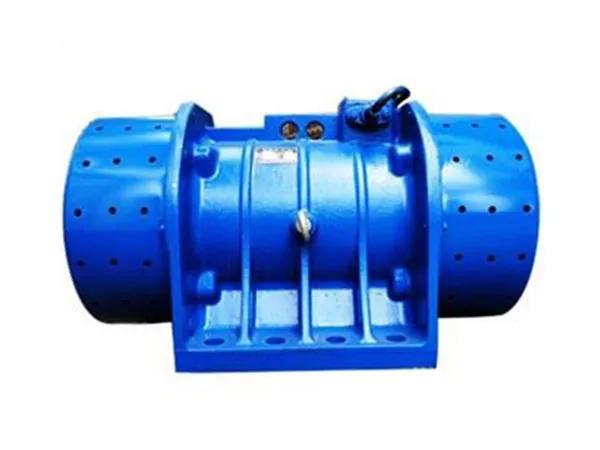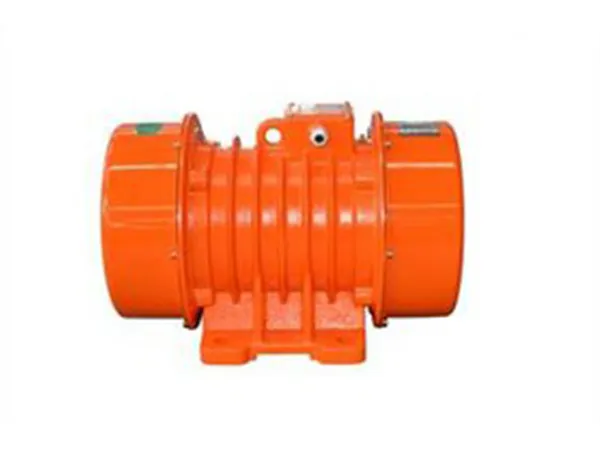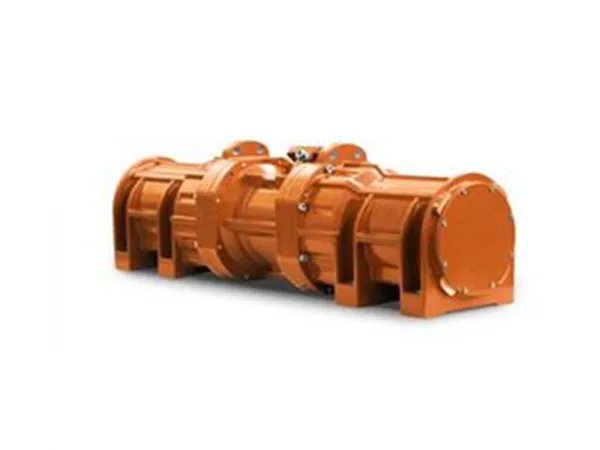
The XVML-A series vibration motors are a specific type of electric motor designed to generate vibrations for various industrial applications. These motors are commonly used in equipment such as vibrating screens, feeders, conveyors, compactors, and sieves to facilitate material handling, sorting, and processing.
The XVM-A series vibration motor adopts an electromagnetic design that is more suitable for the working characteristics of the vibration motor, so that the operating temperature rise of this series of products is lower; the specially configured stator, rotor and electromagnetic parameters enable the vibration motor to produce a greater starting torque. The operation is more stable; the insulation level is increased to F level, and the protection level reaches IP55, which makes the XVM-A series vibration motor more excellent quality.
XVM-A series vibration motors use heavy-duty special vibration-resistant bearings. The coordination of various sizes is based on years of experience in the production and application of vibration motor products from VIMARC in the Netherlands and FRIEDRCH in Germany, combined with the latest European technology. The temperature generated by the vibration motor during operation is effectively controlled, the service life is longer, and the operation is more stable.
XVM-A series vibration motor adopts specially manufactured vibration-resistant and anti-loose connection terminals and output terminals, which overcome the disadvantages of difficult wiring of domestic vibration motor products, and the shortcomings of lead wires and cables that are easy to wear due to vibration, making wiring easier and effective protection Lead wires and outlet cables of the vibrating machine.
The excitation force of XVM-A series vibration motor products can be easily adjusted steplessly from zero to maximum, thereby generating desirable vibration force, which is convenient for users to use; good insulation level and dust and moisture resistance make this The series of vibration motors can be adapted to a variety of harsh job sites.
The design of XVM-A series vibration motors can be applied to three AC power supplies of various standard voltages and frequencies. For example, use 220/380V, 50HZ voltage grades in China and Europe; 230/460V, 60HZ voltage grades in the United States; 220V, 50/60HZ voltage grades in Japan and the grid voltage requirements of Southeast Asian countries and African countries; The similar products of FRIEDRCH in Germany are the same, which can directly replace imported products; it is also easy to purchase products of the same model in the international market with the export of vibration machinery.
Compact Design: XVML-A series vibration motors are engineered with a compact and lightweight design, making them suitable for integration into various types of machinery and equipment.
High Efficiency: These motors are designed for high energy efficiency, providing reliable performance while minimizing power consumption.
Adjustable Settings: XVML-A series motors typically come with adjustable settings for vibration intensity, frequency, and amplitude, enabling operators to customize the vibrations based on specific application requirements.
Durable Construction: They are constructed using durable materials such as cast iron or stainless steel, ensuring robustness and longevity in industrial environments.
Low Maintenance: With sealed construction and few moving parts, XVML-A series motors require minimal maintenance, resulting in reduced downtime and lower operating costs.
Electric Excitation: XVML-A series vibration motors operate based on electromagnetic excitation principles. When an electric current flows through the motor windings, it generates a magnetic field that interacts with the rotor, causing it to rotate.
Eccentric Weight: Each motor in the XVML-A Series is equipped with an eccentric weight mounted on the rotor shaft. As the rotor rotates, the eccentric weight generates centrifugal force, leading to vibration.
Vibration Generation: The vibration produced by the eccentric weight is transmitted to the equipment or machinery connected to the motor, causing it to vibrate. The vibration parameters (intensity, frequency, and amplitude) can be adjusted to meet specific application needs.
Control: XVML-A series motors can be controlled manually or through automated systems such as variable frequency drives (VFDs) or programmable logic controllers (PLCs), offering precise control over vibration characteristics.
XVML-A Series Vibration Motor Applications
Material Handling: XVML-A series vibration motors are commonly used in material handling equipment such as vibrating screens, feeders, and conveyors to facilitate the transportation, sorting, and processing of bulk materials in industries such as mining, aggregates, and recycling.
Compaction: They find applications in compactors and vibratory compacting equipment to densify soil, asphalt, concrete, and other materials in construction, road building, and landscaping projects.
Screening and Sizing: XVML-A series vibration motors are utilized in vibrating sieves and screens for separating particles based on size, shape, or density in industries such as pharmaceuticals, chemicals, and food processing.
Foundry and Metalworking: These motors are used in foundry shakeouts and metalworking equipment to remove sand, debris, and burrs from castings, forgings, and machined parts.
Testing and Calibration: They are also employed in testing equipment, instruments, and calibration devices that require controlled vibrations for performance testing, analysis, and quality assurance purposes.

VB series vibration motors are used as the excitation source of various types of vibration machinery, such as vibrating feeders, vibrating conveyors, vibrating ore discharge machines, vibrating sand shakers, vibrating screens, and vibration anti-blocking devices for silos, etc., and are widely used Electricity, building materials, coal, mining, metallurgy, chemical industry, light industry, casting and other industries.
READ MORE
VBB series explosion-proof electric vibrating motors for applications in the oil & gas sector and wherever safety regulations explicitly require explosion proof certification, according to the international standards in force in various countries.
READ MORE
The VLBL series vibration motors are a specialized type of electric motors designed specifically for generating controlled vibrations in various industrial applications.
READ MORECopyright © 2023 Xinxiang Zongyuan Machinery Equipment Co., Ltd. | All Rights Reserved.